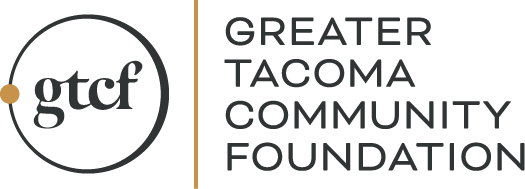
Community
29
In Depth: Impact Investing (Part 1 of 5)
Double bottom line investing.
Triple bottom line investing.
Socially responsible investing.
Mission-related investing.
Impact investing.
There are more terms than we can list to describe all the opportunities today to invest for good. Impact investing is shaking up both philanthropic and traditional finance circles, having captured the attention of investors of all stripes: private and public, for-profit and non-profit, individual and institutional. A recent report, Essentials of Impact Investing, estimates the total impact market could reach between $400 billion and $1 trillion by 2020.
With tremendous opportunities here and on the way, we are rolling up our sleeves and digging in – with our board, with the community, with you – to chart our course in this new world of philanthropy. We see impact investing as the newest tool in our funding toolbox:

With these instruments, we can do tremendous work to further our mission of building a thriving and vibrant Pierce County.
It’s an exciting time! Just over a year ago we announced our first impact investments. But before we update you on these investments, we want to back up and introduce the field impact investing and share how we’re thinking about GTCF’s involvement. This is the first of a multi-part series focused on impact investing – we want to make sure you’re on this journey with us!
What is impact investing?
“Impact investing” was coined in 2007 at the Rockefeller Foundation’s Bellagio Center. Eight years later, it has as many definitions as there are players in the field. Our favorite definition is from Democracy Collaborative:
Making investments that seek both financial and social impact.
Short and simple. Impact investments are distinct from traditional investments in that they seek to have both a social and financial impact – there is a very intentional dual purpose, impact investing is not by accident.
This distinction helps us differentiate impact investments from some of the terms above:
Socially responsible investments (SRIs), for example, are focused on excluding harmful components (called “negative screening”) but do not actively seek positive outcomes.
Mission-related investments do seek to fulfill an organization’s social mission and generate a financial return so, according to our definition, they are in fact impact investments.
Double bottom line (people and profit) and triple bottom line (people, planet, and profit) may be impact investments but are not always, depending on the particular investment and the investor’s intent.
Intentionality is an important part of our own impact investing, which we’ll discuss below.
For us, impact investments exist on a spectrum somewhere between traditional investments and philanthropic grants:
| Traditional Investments | Impact Investments | Philanthropy | ||
|---|---|---|---|---|
| Financial & Social Values/Goals | Profit-driven Market-rate of return | Motivated by financial and social return Investor defined return (may be "financial-first” or “social-first”) | Driven by social good No financial return |
|
| Asset Classes | Fixed Income, Public Equity, Private Equity, Real Assets, Loans | Grants | ||
| Examples | Fidelity, Schwab, Coca Cola, Apple | Trillium Asset Management, Domini Social Investments | Craft 3, Cascadia Foodshed, Bellwether Housing | GTCF, Red Cross, Girls on the Run, KBTC |
Our Role in the Ecosystem
The Ford Foundation paved the way for foundations to become involved in impact investing. Working with the IRS in the 1960’s, Ford created a structure (Program Related Investments) that allows a foundation to make profit-generating investments and maintain its tax-exempt status, so long as those investments further the foundation’s stated charitable goals.
GTCF’s impact investments come from our endowment, from which we make the majority of our traditional philanthropic grants and scholarships. Unlike other funding opportunities on that spectrum, these will be intended to generate both a financial and social return; the intentionality around this dual purpose distinguishes our impact investments.
Another way our impact investments distinguish themselves from traditional investments, but stay consistent with our grants and scholarships, is in their geographic focus: impact investments will be “place-based,” they will all be focused on organizations and businesses that directly benefit our region.
GTCF’s initial investments have been made through trusted intermediaries, Craft3 and the National Development Council’s Grow America Fund (GAF). Both are Community Development Financial Institutions (CDFIs), private financial institutions that are 100% dedicated to delivering resources and financial support to help undeserved communities, primarily through greater access to jobs, housing and services. We are excited to work with these two organizations; they will share their expertise as they invest our funds and help us build hands-on experience.
Our partnerships with Craft3 and NDC are consistent with one of this new field’s trademarks: collaboration. Experience is demonstrating that the best results often arise when impact investments are combined with grants, and other forms of public and private investment. With collaboration at our core, we at GTCF welcome this mode of working. We are already pursuing conversations with others in the field, including Mission Investors’ Exchange, Canopy, and Community Sourced Capital.
We are excited by the possibilities impact investing creates for GTCF to continue to be a driver of positive change in Pierce County! We look forward to your partnership in these efforts.
In our next article, we will dive into our first impact investments. In the meantime, if you are interested in learning more about GTCF’s impact investing program or have questions, don’t hesitate to contact me.
Gina Anstey, VP of Grants & Initiatives
gina@gtcf.org
